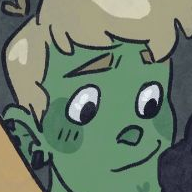Story Foundations
The same way that you could build the tallest skyscraper in town...you can craft the most powerful story ever written in foundation...and they will both potentially come crashing down to the ground if they’ve been built on a weak foundation. Right? I mean, these aren’t a box of Legos that we’re playing with here. People with certain levels of expertise have to be called in to look at the plans, designers, engineers...without a firm foundation, you’re basically going to be spending a huge amount of time working on setting up a house of cards that will ultimate get blown over the second a strong wind comes through to test the foundations that you never made strong enough to begin with. So you definitely need to put these things in place before you get started. It’s a skill that can only be developed with planning and practice...so the sooner you get started on developing those instincts, the sooner they’ll come to you naturally when you pretty much start writing anything. It’ll happen all on its own in time, just give it a chance. Make it a part of your writing discipline, and then refine it over time. That gets to be the fun part. ![]()
So, when I say 'foundations’...what exactly am I talking about here?
I think of writing foundations as a loose template to work with when we’re all trying to organize and personalize our thoughts to create something new...and yet still feels familiar to our readers. Remember, that connection to our audience is super important. It’s our job to intertwine logic and emotion in an entertaining way that can translate them into words that are passionate and compelling for them to interact with. This means being able to recognize and study the basic building blocks of storytelling and making them your own. Let’s dive in!
Foundations are built on a ton of tried and true methods that have been a staple of fiction for centuries. One that we all know. The hero’s journey, the climax, the tragedy of betrayal, the obsession of love...man vs man, man vs the world, man vs self...etc. We all have some sense of how your typical story is structured or how certain character types act and react in the stories that we’ve all enjoyed throughout our entire lives, right? Sure the stories exist with different characters, different timelines, different genres, as they are written by a variety of different authors...but there are core elements that you can use as dependable guidelines to make anything that you want to write possible without ever getting lost or sliding off track.
Some people might consider these foundations to be 'tropes’ or 'cliches’, but I’ve always thought that it was important to examine and understand the traditional rules in order to effectively break them later on. With a few efforts under your belt, you will still be able to build upon these story foundations to create a strong base for your fiction while still changing and altering everything around it to make something uniquely your own. Know your arsenal, and then do all you can to expand on it.
Never stop being a 'student’ when it comes to your craft. There is no way to know it all, and even the stuff you do know tends to change over time and present new elements that you never even knew were there before. So get those basics drilled into your brain so you can pretty much build you creative process around it on autopilot, and use the rest of your energy and effort on customizing every project to fit your style and personality. Be comfortable with what you’re writing. People can tell when you aren’t.
Creating characters have foundations just like every other part of your story. Know the character types as they appear in their many different forms in other stories. The beautiful stranger, the reluctant warrior, the wise old sage, the sacrificial lamb, the court jester or clown….they show up in many many stories, time and time again. So teach yourself how to recognize them when they appear, and then study the way that they are used to carry the story forward. In ways that are new...but still familiar. Do you get it? There’s a base, a strong foundation, that you can use to firmly plant yourself into the story...but you still have more than enough room to play with the specifics of the well known formula to create something of your very own. You can reach a point where you begin to combine and subtract certain elements of your foundations to make something unique. But your first task should be getting those foundations in order so you’ve got a stable tower to stand on.
How do we manage that? It begins with reading as much as we possibly can. That’s how.
Saturate yourself with other writers’ work. Different authors and methods and genres of fiction. They will all read differently, but see if you can begin to pick out certain patterns that exist through all of them. Those are the basic foundations that I’m talking about. Seek them out, think about how they work to keep the story contained and paced in a way that feels focused and familiar...and then think about how you might be able to do something a little bit different with the act of building on top of those foundations in ways that other writers might not have thought about yet. Both with story plot and with your characters. I hope that makes sense...
Let me see how I can better explain this...
Imagine your fiction as though it was a song. K? Over the years, you’ve heard a countless number of songs, and they’ve all been pretty different in their sound and particular flavor, right? The Beatles, Michael Jackson, Led Zepplin, Billy Joel, Lil’ Wayne, Marvin Gaye, Jimi Hendricks, Bob Marley...they all have a unique vibe and a style to them, right? They probably don’t have any songs that really sound similar to one another...but that doesn’t mean that they don’t follow a particular formula when they’re presented to a wide audience. It doesn’t mean that there isn’t a definite blueprint in play when it comes to putting their music together.
There’s an intro...a first verse...a bridge...a chorus...and then on to the second verse. Then there’s a change up in the song at some point the leads to a 'climax’ of sorts for the third verse and then the end of the song. This is the typical song formula. Once you learn to look for it, I can guarantee you that you can hear that foundation in 90% of the music that you listen to, no matter what the genre is or what era in history it was made. That’s a clear expression of the 'rules’ when it comes to making a song. Whether it’s Black Sabbath, Otis Redding, or Frank Sinatra...if you listen for it...you’ll hear it. That’s the template. However...these are rules that can be broken to make something that sounds totally different from what you might be expecting.
Take these two songs below. Now both artists, Queen and R Kelly, have made plenty of songs that actually fit into the template of your typical song...but when I listen to these, they don’t fit any conventional rules at all when it comes to making music. They were genius enough to figure out how to crack the code and make something that had never really been done before for an audience that wasn’t prepared to hear it. "Bohemian Rhapsody" is easily one of the most original songs ever written. The change ups and the vocals are absolutely stunning, and it shatters all forms of a formula when it came to putting it together. It is the pure definition of a rock opera. And R Kelly’s "Exit" just...it amazes me that he was able to craft that song on a weird '3-beat’ instead of the usual '4-beat’ like most songs. I mean, it almost sounds like it shouldn’t make sense or have any kind of rhythm to it at all for an artist to follow with their vocals...but he pulls it off flawlessly. Again, the formula has been completely broken and made anew. This is what is possible when you know where your foundations are and then find creative ways to alter the overall chemistry of the usual cocktail to make it your own.
Now, the secret is how to apply this to your writing...which is easier than it sounds. When you have enough practice, it becomes second nature. I think that every writer should be curious about what they’re capable of when their putting a project together. Explore. Take risks. Face challenges. Use your words, your metaphors, and your adventurous mindset, to find those root standards in storytelling and mold them into something that represents your particular mood and flavor at that time. Constantly be asking yourselves what you can do to break the formula. Use foreshadowing and flashbacks, use positive characters and negative ones...combine situations and obstacles that will either compliment or contrast one another. Take an off road approach with a plot twist, or add in a straight character where your audience is expecting a gay one. Have a 'coming out’ scene with an understanding parent go horribly wrong. You can go with something subtle like a rejection from a first date, to something as major as having one of your main characters get sick or even die off. I don’t know...it’s your story. You’re completely free to do with it whatever you want, but if you want four acts instead of the typical three...do it. If you want your story to end without a definitive ending...leaving it open without closure...hey, it’s your world. Do it. Who’s to say that wasn’t the perfect to go with it. Want to have a big time jump and continue where your story goes on from there...and then go back and tell the readers what they missed in an extended flashback? Give it a shot.
Basically...learn the usual formula, inside and out...and then look for all of the ways that you can break it and change things up with your own little twists and turns. The foundation is your anchor, everything else is flare and glitter and gold. The key is to find a way to keep your beautiful extras from crashing down to the ground before your masterpiece is finished.
It’s important to have those major locks in place so you have something to play around with. That’s all.
Anyway, that’s my discussion on story foundations. I definitely have a few of them, both plot wise and character wise, that I stick to whenever I’m writing one of my own stories. I definitely stray from time to time and try something new so I can blaze a few different trails that I’ve never really explored before...but I know where my core is. I know how to stick to my outline and keep my story within a certain amount of boundaries as a completed project, and then spread my wings and stretch out into new territory with everything that I do. I, personally, feel more comfortable knowing that I have a home to go back to when I feel myself getting a bit too far from my original ideas. And that home exists in my training on how to write stories in the first place. I have to concentrate, and realize that there is a way that this whole 'writing thing’ is supposed to be done. Hehehe, and then...I break as many rules as I can without getting sent to detention for it.
What can I say? I’m devious like that!
As always, I hope this gives you another way to look at your own writing from a new angle, and that these articles will help you see new ways to approach your writing process, or possibly pay more attention to you being able to do what you do. Understanding why you do these things opens your mind up to soooo many other options! Trust me, you have no idea. A moment of introspection and self awareness can fuel the next few months or even years of new stories once you figure out their significance as a part of the art. K?
Take care! Happy writing! And I’ll seezya soon! Love you lots! ![]()
-
 1
1
-
 5
5






1 Comment
Recommended Comments
Create an account or sign in to comment
You need to be a member in order to leave a comment
Create an account
Sign up for a new account in our community. It's easy!
Register a new accountSign in
Already have an account? Sign in here.
Sign In Now